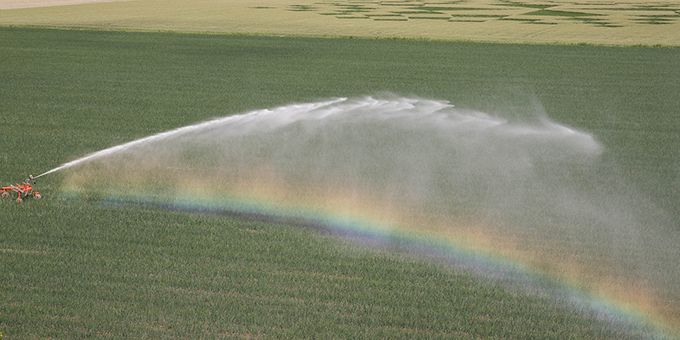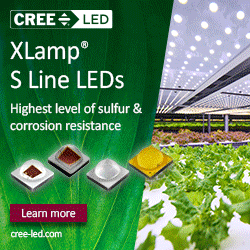As a vital resource for plant-growing, water plays an especially important role in agriculture. This article examines the importance of water quality monitoring with regard to indoor agriculture, and how IoT water sensors are key to enhancing crop yield.
 IoT Water Sensors: Improving Water Quality Management In Agriculture
IoT Water Sensors: Improving Water Quality Management In Agriculture

Michael S. Davies CFA, CMVP | Iota Communications
“Digital” and “data-driven” aren’t terms traditionally associated with agriculture, but statistics show that smart farming—the concept of applying the latest technology and data to growing agricultural products—is taking off. Whether you’re talking about vertical farming, precision farming, greenhouse farming, hydroponics, or any other agriculture practice, one thing seems to be very clear: Technology, and the Internet of Things (IoT) in particular, has proven to be very valuable in creating favorable conditions for plant-growing. The result: More farmers are able to maximize crop growth and increase their production capability.
As a vital resource for plant-growing, water plays an especially important role in agriculture. This article examines the importance of water quality monitoring with regard to indoor agriculture, and how IoT water sensors are key to enhancing crop yield.
Real-time Water Quality Monitoring Using IoT Water Sensors
Indoor farming companies like AeroFarms and Bowery Farming are attracting unprecedented interest from investors. Why? Because they have been successful in their unique approaches to farming, which rely on tightly controlled environments to grow the best plants possible.
Vertical and other types of farming operations need to control a number of environmental factors, such as light, air quality, soil moisture, and more. When it comes to water specifically, real-time water quality monitoring systems that include IoT sensors are an ideal form of technology to apply to the challenge of environmental controls for the following reasons:
- IoT-based systems monitor remotely, so capturing information whether or not someone is physically present in the building. Once the data is collected by sensors, it is transmitted over the network and into the cloud, where you can then access it on your computer.
- IoT water sensors monitor continuously as opposed to taking periodic, point-in-time measurements. The monitoring process is continuous and dynamic, giving you near real-time feedback surrounding your desired measurements.
- An IoT monitoring system is capable of providing monitoring alerts via text. You set the quality parameters for whatever water quality characteristic you want to monitor, and the system will automatically send an alert if a measurement falls outside the acceptable range. That gives you time to make a change quickly, preventing extensive plant damage.
- IoT systems make water quality monitoring easy and efficient. Digital data collection reduces the time it takes to gather data; plus, IoT platforms usually include advanced analytics programs that can measure, catalog and analyze the data faster than is humanly possible.
- IoT near real-time monitoring is cost-effective. The cost of microprocessors has fallen in recent years, and the fact that sensors are wireless makes installation fairly inexpensive as well. Implementing such a system is within reach of just about any company, and usually has a high return on investment.
- IoT water sensors can be used to monitor a whole host of variables. Plant growth may be hindered by the presence of certain factors in the growing environment. Water quality measurement instruments (sensors) can be used to measure things like:
- pH level—Water with a too-high pH level (an indicator of acidity) could be detrimental to some plants, making it difficult for them to absorb nutrients from the soil; others are less affected by soil pH and are able to absorb higher levels of aluminum or magnesium in even very acidic water.
- Salinity—The nutrients plants use for development are absorbed as ionic salts; however, some plants tolerate high salinity while others will not. Irrigation water ranges in salinity; that salinity is usually measured as the electrical conductivity (EC) of water because dissolved salts in water conduct electricity. The higher the EC level, the higher the salt concentration. Electric conductivity sensors are used to monitor salinity and nutrient levels in water and can be combined with other IoT sensors to monitor light levels and environmental conditions such as temperature, relative humidity, CO2 levels and particulate matter.
- Oxidation-reduction potential (ORP)—ORP essentially measures the ability of water to break down contaminants. ORP sensors allow you to track and monitor critical disinfectant levels in your water system. ORP levels outside of an acceptable range (too high or too low) could negatively impact plant growth. ORP levels are also used to measure the sterility of water. High ORP levels kills pathogens and translate into a sterile water conditions.
Interested in trying out IoT water sensors at your indoor agriculture facility?
If you’re looking for a way to gain an economic and quality advantage at your indoor growing facility, reach out to us at Iota about how you can get started with real-time water quality monitoring using the IoT. We’ll help you determine the best strategy for implementing IoT sensors that not only makes monitoring simple but also promotes the healthiest environment for your plants.
The content & opinions in this article are the author’s and do not necessarily represent the views of AgriTechTomorrow
Comments (0)
This post does not have any comments. Be the first to leave a comment below.
Featured Product

